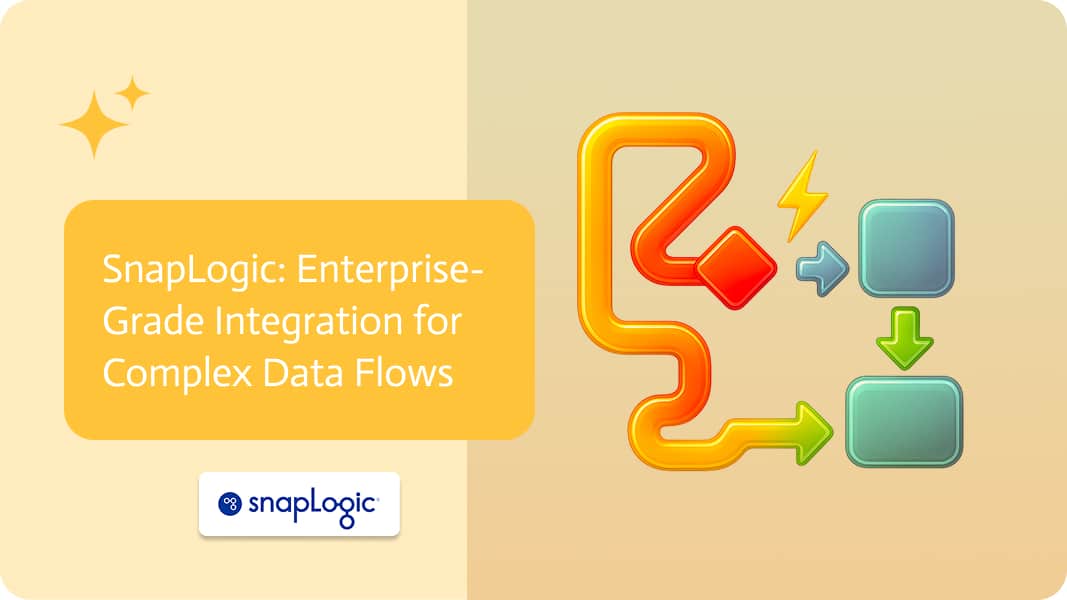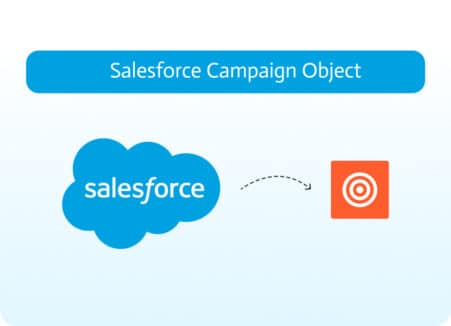

SnapLogic: Enterprise-Grade Integration for Complex Data Flows
In today’s rapidly evolving digital landscape, businesses face the challenge of connecting a growing number of applications, data sources, and devices. For medium to large enterprises, this challenge is even more pronounced due to the complexity and scale of their operations. SnapLogic, an Integration Platform as a Service (iPaaS), offers a solution designed to address these challenges.
SnapLogic enables organizations to seamlessly connect applications, data, and devices across both cloud and on-premises environments. With its robust set of pre-built connectors, SnapLogic empowers IT professionals to streamline operations, enhance data flow, and drive digital transformation. However, while SnapLogic is well-suited for complex integration needs, it may be overly sophisticated for smaller businesses with simpler requirements.
What is SnapLogic?
SnapLogic is a cloud-based iPaaS solution designed to manage enterprise-grade integrations and large-scale data flows. It provides a unified platform for application integration, data integration, API management, and B2B integration. Known for its powerful backend capabilities, SnapLogic allows users to create sophisticated integrations using a drag-and-drop interface combined with advanced data mapping and transformation tools.
The Benefits of Using SnapLogic
SnapLogic offers a range of benefits that make it an attractive choice for enterprises with complex integration needs:
- Scalability: SnapLogic’s architecture is built to handle complex, high-volume data integrations, making it ideal for growing enterprises.
- Comprehensive Integration Capabilities: It supports a wide range of integration scenarios, including cloud-to-cloud, cloud-to-ground, and on-premises integrations.
- Intelligent Connectors: SnapLogic offers a vast library of pre-built intelligent connectors (Snaps) for popular applications and databases, reducing the need for custom development.
- Visual Interface: The platform provides an intuitive drag-and-drop interface for designing integration pipelines, making it accessible even to those without extensive coding experience.
Challenges of Using SnapLogic
Despite its strengths, SnapLogic also presents some challenges that organizations should be aware of:
1. Learning Curve:
Mastering the platform’s advanced features is quite challenging. Users may find that there is a significant amount of time and training required to become proficient in using the more complex aspects of SnapLogic. This learning process may involve not only understanding the platform’s tools and capabilities but also gaining a deep knowledge of integration strategies and best practices. As a result, organizations may need to invest in specialized training or allocate time for their teams to gradually build the necessary expertise.
2. Cost
SnapLogic’s pricing model is structured in a way that primarily benefits larger enterprises with substantial integration needs. While this makes sense given the platform’s robust capabilities, it can also make SnapLogic a less viable option for smaller businesses or startups that may have limited budgets. The cost of using SnapLogic could be considered prohibitive for these organizations, especially when compared to other solutions that may offer a more scalable pricing structure suitable for companies at different stages of growth.
3. Complexity
SnapLogic is equipped with a wide range of features and functionalities designed to handle complex integration scenarios. However, for organizations with relatively simple integration needs, the sheer breadth of SnapLogic’s capabilities might be overwhelming. This complexity can lead to challenges in implementation, as users may struggle to navigate the extensive options and settings available within the platform. In some cases, the additional features might not be necessary, adding an extra layer of complexity that could complicate rather than simplify the integration process.
4. Performance Tuning
One of the challenges with SnapLogic is ensuring that complex integrations are optimized for performance. As integrations become more intricate, there can be a need for fine-tuning to maintain efficiency and avoid performance bottlenecks. This process can be quite challenging and often requires a high level of expertise. Users may need to have or develop a deep understanding of both the platform and the underlying systems being integrated to effectively optimize these processes. Without this knowledge, organizations might struggle to achieve the desired performance levels.
5. Limited Low-Code Options
While SnapLogic does offer a visual interface that allows users to create integrations through a drag-and-drop system, this low-code approach has its limitations. For more advanced or highly customized integrations, users may still need to rely on traditional coding. This requirement can present a significant barrier for non-technical users who may not have the coding skills necessary to fully leverage the platform’s capabilities. As a result, organizations may need to involve IT professionals or developers to handle these more complex tasks, which could limit the platform’s accessibility to business users.
Top 9 Use Cases for SnapLogic
SnapLogic’s versatility makes it suitable for a wide range of integration scenarios across various industries. Below are some of the most impactful use cases, along with their specific sub-use cases:
1. SnapLogic for CRM Integration
SnapLogic’s CRM integration capabilities enable enterprises to connect Customer Relationship Management systems with various applications and platforms, facilitating seamless data exchange and unified operations. This integration helps medium to large enterprises synchronize customer information, automate tasks, and enhance interactions across departments.
- 1.1 Real-time Data Synchronization: Bi-directional sync of customer data between CRM and other enterprise systems.
- 1.2 Advanced Lead Scoring: Integrating CRM with analytics platforms for sophisticated lead scoring models.
- 1.3 Omnichannel Customer Experience: Connecting CRM with multiple customer touchpoints for a unified view.
- 1.4 Predictive Analytics: Leveraging CRM data for predictive modeling and customer insights.
- 1.5 Automated Workflow Orchestration: Creating complex, multi-step workflows across CRM and other business systems.
2. SnapLogic for Large-Scale ERP Integration
SnapLogic’s ERP integration solutions involve linking Enterprise Resource Planning systems with other applications and platforms to enable smooth data flow and cohesive functionality at scale. This integration helps enterprises synchronize operational data, automate workflows, and enhance efficiency across departments.
- 2.1 Global Supply Chain Integration: Connecting ERP with global supply chain systems for end-to-end visibility.
- 2.2 Financial Consolidation: Integrating ERP with financial systems for comprehensive reporting and analysis.
- 2.3 IoT-Enabled Manufacturing: Connecting ERP with IoT devices for real-time production monitoring and optimization.
- 2.4 Advanced Inventory Management: Integrating ERP with warehouse management and e-commerce platforms for real-time inventory tracking.
- 2.5 Cross-System Business Process Automation: Creating complex workflows that span ERP and other enterprise systems.
3. SnapLogic for Collaboration Tools Integration
SnapLogic’s Collaboration Tools Integration involves connecting various software applications and platforms that support teamwork, communication, and project management at an enterprise level. This integration enables organizations to streamline workflows, increase productivity, and ensure a smooth flow of information across teams and departments.
- 3.1 Enterprise-wide Project Synchronization: Integrating multiple project management tools for a unified view of all projects.
- 3.2 Advanced Document Management: Connecting collaboration tools with enterprise content management systems for sophisticated document workflows.
- 3.3 Automated Reporting: Generating comprehensive reports by pulling data from various collaboration and productivity tools.
- 3.4 Cross-Platform Workflow Automation: Creating complex workflows that span multiple collaboration and business systems.
- 3.5 Secure Information Sharing: Implementing secure data exchange between collaboration tools and other enterprise systems.
4. SnapLogic for Omnichannel Customer Service Integration
SnapLogic’s Customer Service Integration capabilities connect customer service platforms with various business systems and tools to enhance customer interactions and streamline support processes. By integrating customer service software with CRM, ERP, and other enterprise applications, organizations can provide faster, more personalized support.
- 4.1 Omnichannel Support Integration: Unifying customer interactions across multiple channels for a seamless support experience.
- 4.2 AI-Powered Customer Insights: Integrating customer service data with AI and analytics platforms for advanced customer insights.
- 4.3 Predictive Support: Leveraging integrated data for predictive modeling to anticipate customer needs.
- 4.4 Automated SLA Management: Integrating support systems with business process management tools for automated SLA tracking and escalation.
- 4.5 Knowledge Base Optimization: Connecting support systems with content management and analytics tools for continuous knowledge base improvement.
5. SnapLogic for Productivity Tools Integration
SnapLogic’s Productivity Tools Integration involves connecting various software applications to boost organizational efficiency and streamline workflows at an enterprise scale. By ensuring that enterprise productivity tools work together seamlessly, SnapLogic enables data synchronization and workflow automation across large organizations.
- 5.1 Enterprise-wide Task Management: Synchronizing tasks across multiple productivity and project management tools.
- 5.2 Advanced Time Tracking and Analysis: Integrating time tracking tools with ERP and analytics platforms for comprehensive productivity analysis.
- 5.3 Automated Document Workflows: Creating sophisticated document workflows across multiple enterprise systems.
- 5.4 Cross-Platform Resource Management: Integrating resource management across various enterprise tools for optimized allocation.
6. SnapLogic for DevOps and CI/CD Integration
SnapLogic’s DevOps integration capabilities enable seamless connection between development, testing, and operations tools to streamline the software delivery process. This integration enhances collaboration, automates workflows, and improves the speed and quality of software releases.
- 6.1 Continuous Integration and Deployment: Automating the build, test, and deployment processes across multiple environments.
- 6.2 Infrastructure as Code: Integrating DevOps tools with cloud platforms for automated infrastructure provisioning.
- 6.3 Monitoring and Alerting: Connecting monitoring tools with incident management systems for proactive issue resolution.
- 6.4 Release Management: Integrating release management tools with other DevOps systems for streamlined software delivery.
- 6.5 Security Automation: Incorporating security tools into the DevOps pipeline for continuous security testing and compliance checks.
7. SnapLogic for Accounting Software Integration
SnapLogic’s Accounting Software Integration solutions enable large-scale connections between accounting systems and other enterprise applications. This integration allows for automated financial data exchange, reducing manual entry and errors while enhancing the efficiency and accuracy of financial processes.
- 7.1 Financial Close Automation: Integrating accounting software with other financial systems for streamlined period-end closing.
- 7.2 Real-time Financial Reporting: Connecting accounting systems with business intelligence tools for up-to-date financial insights.
- 7.3 Multi-entity Consolidation: Integrating accounting data from multiple subsidiaries or business units for consolidated reporting.
- 7.4 Automated Reconciliation: Connecting accounting software with bank systems and other financial platforms for automated reconciliation.
- 7.5 Compliance and Audit Support: Integrating accounting systems with compliance and audit tools for enhanced financial governance.
8. SnapLogic for HRIS Integration
SnapLogic’s HRIS Integration capabilities connect Human Resource Information Systems with other enterprise applications and platforms. This integration ensures seamless data flow across HR, payroll, benefits, and other related systems, enabling comprehensive workforce management.
- 8.1 Global Workforce Management: Integrating HRIS with global payroll and time-tracking systems for unified workforce management.
- 8.2 Advanced Analytics for HR: Connecting HRIS with business intelligence tools for in-depth workforce analytics and insights.
- 8.3 Employee Lifecycle Automation: Creating integrated workflows that span recruitment, onboarding, development, and offboarding processes.
- 8.4 Compliance Monitoring: Integrating HRIS with compliance management systems for automated regulatory adherence.
- 8.5 Performance Management Integration: Connecting HRIS with performance management and learning management systems for holistic employee development.
9. SnapLogic for Payment Processing Integration
SnapLogic’s Payment Processing Systems Integration solutions enable large-scale connections between payment gateways, financial systems, and other enterprise applications. This integration facilitates seamless and secure payment processing across various channels and platforms.
- 9.1 Omnichannel Payment Integration: Unifying payment processing across multiple sales channels and platforms.
- 9.2 Fraud Detection and Prevention: Integrating payment systems with advanced fraud detection tools for enhanced security.
- 9.3 Automated Reconciliation: Connecting payment processors with accounting and ERP systems for streamlined financial reconciliation.
- 9.4 Subscription Billing Management: Integrating payment systems with subscription management platforms for automated recurring billing.
- 9.5 Global Payment Compliance: Connecting payment systems with compliance tools to ensure adherence to international payment regulations.
Top 8 SnapLogic Alternatives: Exploring More Efficient Integration Solutions
As businesses look for more efficient and user-friendly integration platforms, many are turning away from SnapLogic in favor of alternatives that offer better accessibility, scalability, and AI-driven features. Here’s a quick list of the top 8 SnapLogic alternatives, each addressing specific challenges that SnapLogic users might face:
- Noca AI: Noca AI offers an AI-powered, no-code platform with scalable pricing, making it accessible for businesses of all sizes.
- Zapier: Zapier is ideal for small to medium businesses needing easy-to-use, app-based integrations for simpler workflows.
- Workato: Workato provides robust, AI-driven automation features suitable for larger enterprises but can be complex for simpler tasks.
- MuleSoft: MuleSoft excels in API management and connectivity, making it a strong choice for large enterprises, though it comes with a steep learning curve.
- Boomi: Boomi offers versatile cloud-native integration capabilities but has a user interface that can be challenging for beginners.
- Tray.io: Tray.io is known for its visual workflow builder, great for both simple and complex integrations, though pricing can escalate quickly.
- Celigo: Celigo is best for NetSuite users, offering strong integration capabilities but with a primary focus that may limit broader applicability.
- Jitterbit: Jitterbit provides robust API management for both on-premises and cloud integrations but may require technical expertise for complex setups.
These alternatives offer varied strengths, making it easier for businesses to find a solution that fits their specific needs and overcomes the limitations of SnapLogic.
SnapLogic vs. Noca AI: A Comparison
As businesses navigate increasingly complex software ecosystems, the demand for robust integration platforms has surged. In the ongoing debate of SnapLogic vs. Noca AI SnapLogic has long been a dominant force in the enterprise integration space, Noca AI is emerging as a formidable challenger with its innovative, AI-driven approach. SnapLogic, though powerful, often requires extensive training to master its advanced features, making it less accessible to non-technical users and smaller businesses. Its pricing model also caters primarily to large enterprises, potentially excluding startups or growing companies with limited budgets. In contrast, Noca AI offers a more user-friendly experience, leveraging artificial intelligence and natural language processing to democratize integration capabilities. This approach significantly reduces the learning curve, enabling users of all technical levels to create complex integrations quickly and efficiently.
Noca AI further distinguishes itself with a scalable pricing structure that accommodates businesses of all sizes, ensuring that powerful integration tools are accessible without hefty financial commitments. While SnapLogic’s extensive features can overwhelm organizations with simpler needs, Noca AI simplifies the process by using AI to suggest and implement appropriate integration strategies, streamlining the user experience. Additionally, Noca AI’s platform continuously optimizes integration performance through machine learning, eliminating the need for manual tuning and specialized knowledge. By offering a true no-code experience where natural language instructions are translated into complex workflows, Noca AI empowers business users to independently manage sophisticated integrations. This combination of accessibility, scalability, and intelligent automation positions Noca AI as a superior choice for organizations seeking a future-proof solution in the rapidly evolving landscape of enterprise integration.


